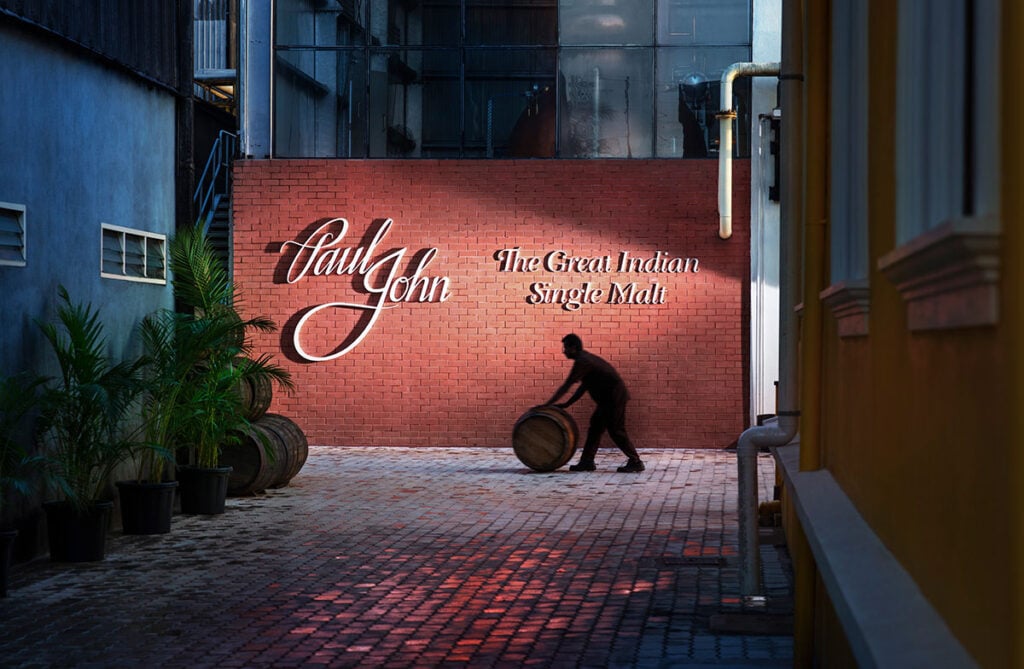

Do you have a preference between Amrut vs. Paul John?
Indian single malt is no novelty, but some whisky lovers might not be as familiar with its leading lights.
Among Rampur, Godawan, Indri, and more, two names lead the charge: Bangalore’s Amrut and the Goan coastal force that is Paul John.
Both work with Indian barley, tropical ageing, and a serious sense of identity. But each has its own style. Amrut pushes intensity. Its whiskies hit hard, packed with spice, oak, and tropical heat. Paul John plays it differently – fruit-led, balanced, and precise, with peat used more like punctuation than punctuation marks.
Which is the dram for you? This is Amrut vs. Paul John: Battle of the Indian Single Malts.
Origins and Distillery Profiles
Amrut Distilleries
Founded in 1948, Amrut has long been a part of India’s spirits landscape – but it wasn’t until 2004 that it released its first single malt. It was worth the wait. Produced in Bangalore at an altitude of 3,000 feet, Amrut’s whisky benefits from dry, high-heat conditions that dramatically accelerate maturation. They say ageing that might take 12 years in Scotland takes four here (which, while a little reductive, speaks to significant cask influence in such extreme climates), creating whiskies that are bold, concentrated, and full of character. The name Amrut translates to ‘nectar of the gods’. Hyperbole? Maybe. But the whisky more than holds its own.
Paul John Distilleries
Paul John started distilling in 1992, though its single malts only reached shelves in 2012. Based in Goa, the climate is humid and coastal rather than dry and high-altitude, which has a noticeable impact on the whisky’s development. Barley is sourced locally (six-row Indian varietal), and the occasional use of Scottish peat adds depth without dominating. Maturation is slower and rounder than in Bangalore, and it shows. Paul John whiskies are typically softer, more fruit-led, and detail-focused in their delivery.

Are you an Amrut drinker?
Production Techniques
Amrut
Amrut runs a classic setup: copper pot stills, wooden washbacks, and a focus on bourbon casks. But the variables that matter – altitude, temperature, and Indian barley grown near the Himalayan foothills – give it a style all its own. With evaporation rates pushing 10–15% a year, there’s no time for slow builds. Even its younger whiskies show a surprising density of flavour.
Paul John
Paul John’s approach features longer fermentation times to bring out fruity, estery notes. There’s no chill-filtration, and wood is primarily bourbon, which lets the spirit speak clearly. Peated expressions (like Bold and Edited) are made using imported Scottish peat, but they’re always balanced – smoke appears in support, never as the headline. The goal is control, not bombast, with consistency and clarity baked into the process.
Flavour Profiles
Amrut
Amrut’s whiskies come in hot, not just in strength, but in flavour. Spice is prominent, from clove and cardamom to pepper and chilli, often underpinned by tropical fruit, charred oak, and occasional peat. There’s grip and weight on the palate, sometimes a little fiery, sometimes fantastically layered. It’s whisky that isn’t afraid to show its workings.
Paul John
Paul John leans into texture, fruit, and balance. You’ll often find notes of guava, melon, honey, citrus, and vanilla, with a softness that contrasts cleanly with Amrut’s heat. Even when peat is involved, it’s deftly handled. These are whiskies that reward attention and repeat tasting, not because they’re difficult, but because they’re dialled in.

Paul John whisky is one of the leading lights of the Indian whisky scene
Signature Expressions
Amrut Fusion
Fusion is Amrut’s statement bottle: a blend of 75% Indian unpeated and 25% Scottish peated barley. The result is a whisky of intense spice, fruit, and dark chocolate, shot through with smoke and a touch of herbal bitterness. Bottled at 50%, it’s assertive without being brash and a great showcase of Amrut’s capacity for complexity at speed.
Paul John Brilliance
Brilliance is unpeated and polished, highlighting Paul John’s lighter side. Expect baked apple, cinnamon, barley sugar, and honeycomb. There’s texture, sweetness, and just enough grip to keep things interesting. It doesn’t demand attention, but it tends to hold it.
Awards and Recognition
Amrut
Amrut has spent the past two decades building serious credibility among global whisky fans. It’s picked up a long list of accolades from the likes of the World Whiskies Awards, the IWSC, and the Malt Maniacs. Fusion, in particular, helped cement its reputation as the distillery that proved Indian whisky could compete – and win – on the world stage.
Paul John
Paul John’s awards haul is equally impressive, with multiple wins across international competitions. It’s built a loyal following by delivering clarity, consistency, and a distinctive style that stands apart from both Scotch and its Indian peers. Elegant packaging, smart cask management, and a thoughtful portfolio have all helped seal the deal.

Amrut vs. Paul John: What’s your pick?
Conclusion
Amrut and Paul John aren’t rivals – they’re reference points. Both distilleries have made Indian single malt impossible to ignore. This isn’t a contest of better or worse, it’s about which style speaks to you. The only question is: what kind of whisky do you want in your glass?
I’ll be completely honest with you here, I don’t have a preference… yet. I’ve tried a few whiskies from each stable a few times, and I’m still figuring each out for myself. That’s part of the fun of whisky. I am looking forward to establishing a favourite. Be sure to let us know if you have one in the comments below.
The post Amrut vs. Paul John: Battle of the Indian Single Malts appeared first on Master of Malt blog.